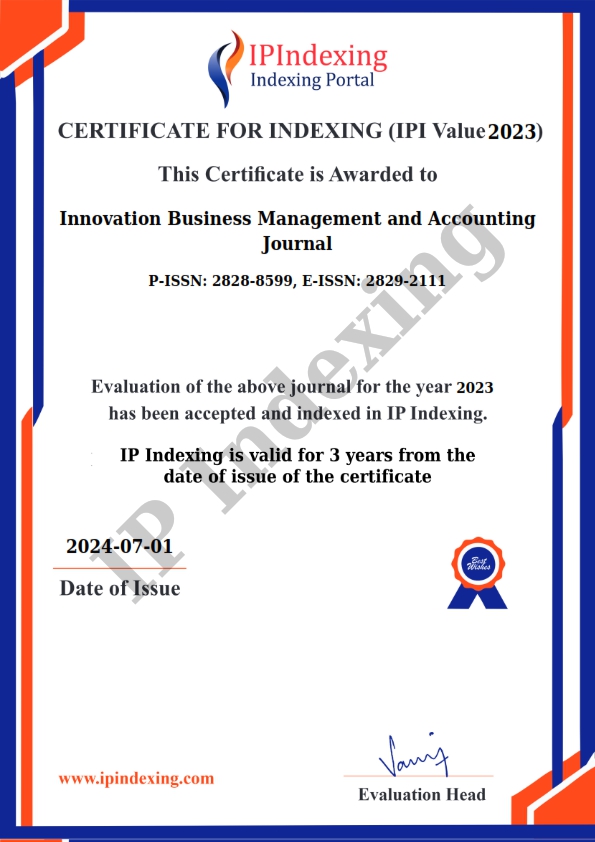
JOURNAL MENU
SUBMISSION
TEMPLATE
INFORMATION
ISSN
- E-ISSN: 2829-2111

- P-ISSN: 2828-8599

TOOLS
OTHER
The manuscript texts are written in English. Manuscripts will be first reviewed by editor. The main text of a manuscript must be submitted as a word document (.doc/.rtf). The manuscript consists no more of 4000-6000 words, well-typed in a single column on A4 size paper with margins 2cm, use Book Antiqua. The manuscript contains an original work and has potentially contributed to the highly scientific advancement (see: article template).
The manuscript should contain the following section in this order:
Tittle
Type the Tittle of Your Manuscript (the title no more than 20 words)
The Author(s) Name
Full name without academic degrees and titles, written in capital letters. Manuscript written by groups needs to supplemented by complete contact details.
Name of affiliation for each author. The author's name should be accompanied by a complete affiliation address, postal code number, and email address.
Abstract
The abstract should stand alone, which means that no citation in the abstract. The abstract should concisely inform the reader of the manuscript’s purpose, its methods, its findings, and its value. The abstract should be relatively nontechnical, yet clear enough for an informed reader to understand the manuscript’s contribution. The manuscript’s title, but neither the author’s name nor other identification designations, should appear on the abstract page. An abstract between 100-200 words.
Keywords
Written in English 3-5 words or groups of words, written alphabetically.
Introduction
The introduction should describe the nature of the problem and current state of knowledge; state the purpose, scope and general methods, and present hypothesis and/or research goals. The paper should demonstrate an adequate understanding of the relevant literature in the field and cite an appropriate range of literature sources.
The introduction should state clearly the objective of the paper as well as the context of the investigation. The literature review should be limited to the articles, books and other items that are relevant to specific research questions addressed. The theoretical framework of the research may contain a full section explaining the motives of the research, identifying a gap in the existing literature of the research, and potential usefulness of the proposed theoretical basis.
Methods
The methods section describes the steps followed in the execution of the study and also provides a brief justification for the research methods used. It should contain enough detail to enable the reader to evaluate the appropriateness of your methods and the reliability and validity of your findings. Furthermore, the information should enable experienced researchers to replicate your study.
The methodology section contains the approach used in producing scientific articles. Specifically for scientific research articles, the methodology section includes research methods, populations, and samples, as well as data analysis steps.
Results and Discussion
The results of the study explain straightforwardly the research questions by using the results table of research data processing not only to describe the results of the research table but more directly than the analysis of the research results.
Discussion of the research part of the description of how the results of research which can be known whether it can be confirmed or unconfirmed so find answers to research questions of each variable / research hypothesis.
Conclusion
Conclusions explain the findings of the study that are relevant to the research question and research objectives without using statistical data. The conclusion section includes the implications of further research and research.
References
Reference using American Psychological Association (APA) style 7 edition is recommended using Mendeley, EndNote and other reference applications (at least 80% of the primary literature).

JOURNAL MENU
SUBMISSION
TEMPLATE
INFORMATION
ISSN
TOOLS
OTHER
Publisher: Trescode Green Organization
Green Caraka Residence, Blok 4, No. 3, Cisaranten Endah, Arcamanik, Bandung, Indonesia
Telp: +6287855327130
Email: ejournal@trescode.org
![]()
This work is licensed under a Creative Commons Attribution-ShareAlike 4.0 International License.
